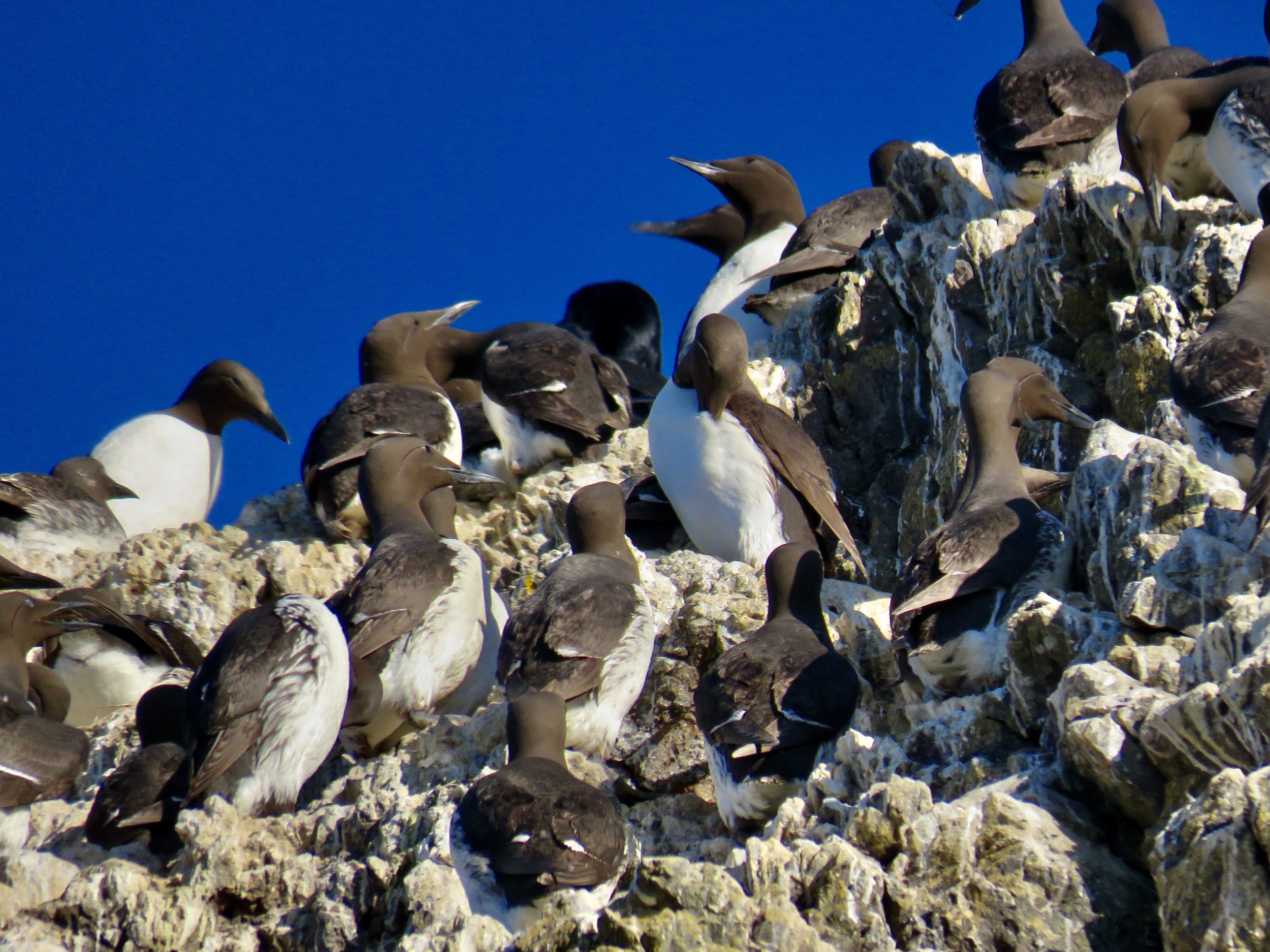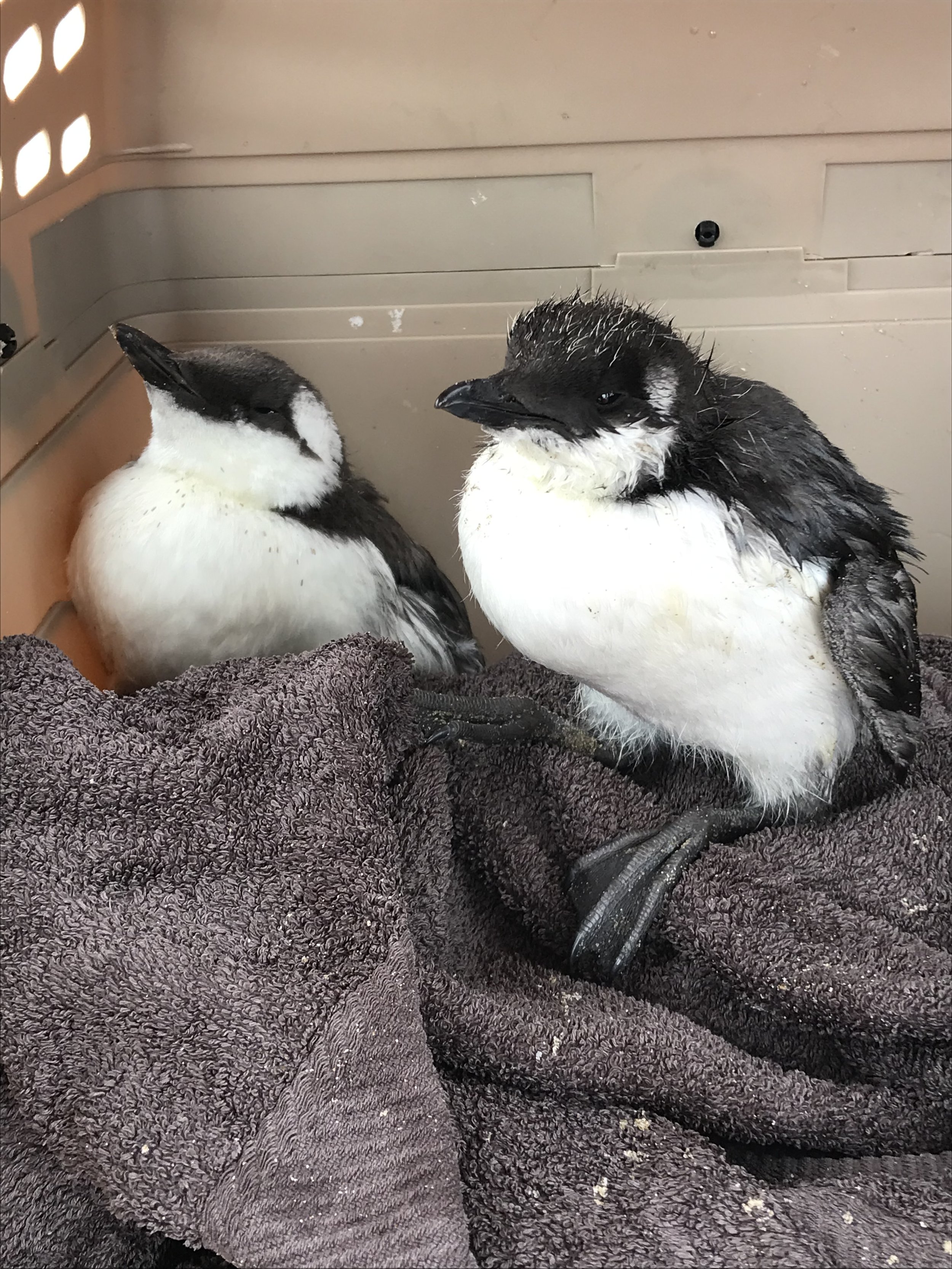Common Murre (Uria aalge)
Common murre colony (photo credit: Molly Sultany)
Rescued common murre chicks (photo credit: Zoe O’Toole)
Description: Common murres are recognizable by their football-shaped body, their white bellies, and their brownish-black heads and backs. These little birds are 38-43 cm tall and weigh about 1 kg. Similar to puffins and auks, common murres flap their wings to “fly” underwater as they swim and dive for fish to eat. Like many other birds at Haystack Rock, common murres live out on the open ocean for most of the year and only come back to the coastline to breed.
Habitat: The common murre is found on the Pacific Coast of North America from Alaska to northern California. At Haystack Rock, these birds are found resting in large colonies that cover a significant portion of the rock’s grassy north side as well as the two pointy rocks south of Haystack Rock known as The Needles.
Nesting: Unlike their relatives, the tufted puffin, common murre pairs do not lay their eggs in burrows or even in a nest, instead they lay their egg directly on cliff edges. Each pair lays just one egg and takes turns incubating it for 28 to 37 days. The murre chicks stay on the cliffs for an additional 15 to 25 days until they jump off the cliff edge and follow their parents to sea. It is believed that the murre chicks do not learn how to fly until they are 50 to 70 days old, spending their time swimming until then.
Diet: Common murres can dive to depths of more than 45 m to forage for fish including herring, capelin, sand lance, and cod. Though they primarily eat fish, they will also eat squid, crustaceans, and marine worms.
Tide Pool Tidbits:
Common murres hold the fish they catch in their mouth by using their tongues to press the fish into the roof of their mouth. On the roof of their mouth are nubs called denticles that help this bird grip onto the slippery fish.
Common murre eggs come in a variety of appearances: they have varying amounts of brown speckles and range in color between blue, teal, green, and white. The egg shapes are also quite distinct: very narrow with a larger end.
When murre chicks leave the nest they are called jumplings rather than fledglings because they do not know how to fly yet.
Reference: The Cornell Lab



